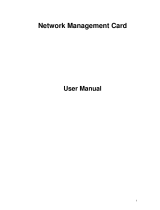
Copyright
Nuance ® Management Center.
2020 Nuance Communications, Inc.
4/3/2020
This material may not include some last-minute technical changes and/or revisions to the software.
Changes are periodically made to the information provided here. Future versions of this material will
incorporate these changes.
No part of this manual or software may be reproduced in any form or by any means, including, without
limitation, electronic or mechanical, such as photocopying or recording, or by any information storage and
retrieval systems, without the express written consent of Nuance Communications, Inc. Specifications are
subject to change without notice.
Copyright © 2020 Nuance Communications, Inc. All rights reserved.
Nuance, ScanSoft, the Nuance logo, the Dragon logo, Dragon, DragonBar, NaturallySpeaking,
NaturallyMobile, RealSpeak, Nothing But Speech (NBS), Natural Language Technology, Select-and-Say,
MouseGrid, and Vocabulary Editor are registered trademarks or trademarks of Nuance Communications,
Inc. in the United States or other countries. All other names and trademarks referenced herein are
trademarks of Nuance Communications or their respective owners. Designations used by third-party
manufacturers and sellers to distinguish their products may be claimed as trademarks by those third-
parties.
Adobe and Acrobat are registered trademarks of Adobe Systems Incorporated. AMD is a trademark of
Advanced Micro Devices, Inc. America Online is a registered trademark of America Online, Inc., a division
of AOL Time Warner. Corel and WordPerfect are registered trademarks of Corel Corporation. iPAQ is a
registered trademark of the Hewlett-Packard Company. Lotus and Lotus Notes are registered trademarks
of Lotus Development Corporation. Macromedia Flash is a trademark of Macromedia, Inc. Microsoft,
Outlook, Windows, Windows NT, Visual Basic, and PowerPoint are trademarks or registered trademarks of
Microsoft Corporation. Mozilla, Mozilla Firefox, and Mozilla Thunderbird are trademarks or registered
trademarks of the Mozilla Foundation. Palm OS is a registered trademark of PalmSource, Inc. or its
affiliates. Panasonic is a registered trademark of the Matsushita Electric Industrial Co., Ltd. Pentium is a
registered trademark of Intel Corporation. Sony and Memory Stick are registered trademarks of the Sony
Corporation. Voice It, the Voice It logo, and Voice It Link are trademarks or registered trademarks of VXI
Corporation.
Disclaimer
Nuance makes no warranty, express or implied, with respect to the quality, reliability, currency, accuracy,
or freedom from error of this document or the product or products referred to herein and specifically
disclaims any implied warranties, including, without limitation, any implied warranty of merchantability,
fitness for any particular purpose, or non-infringement.
Nuance disclaims all liability for any direct, indirect, incidental, consequential, special, or exemplary
damages resulting from the use of the information in this document. Mention of any product not
manufactured by Nuance does not constitute an endorsement by Nuance of that product.
Notice






















